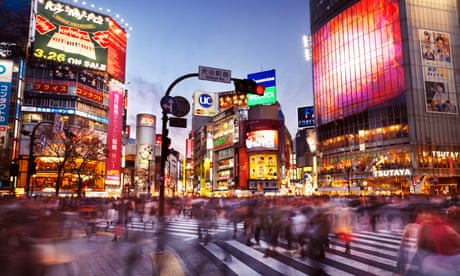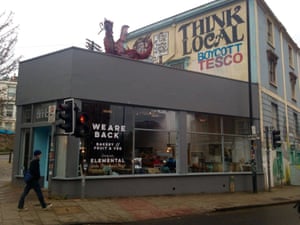In the 1990s, the Bristol neighbourhood of Stokes Croft was a hub of unchecked creativity. The vast Victorian façades, many of which had been abandoned to the elements, were a ready-made canvas for street artists such as Banksy and Robert Del Naja (also known as 3D), who became household names. Sound systems piled into squats while the police turned a blind eye, fostering global stars such as Tricky and Massive Attack.
Two decades on, and Stokes Croft is increasingly home to artisan coffee shops, burger bars and craft ale pubs that signify urban modernity. The graffiti, once a marker of lawlessness, is now consigned to council-sanctioned tourist sites.
Is urban regeneration about more than the material? Absolutely ”¦ It’s about a piece of heaven on earthDoug Anderson
But every Thursday evening, its proprietors meet here to worship, where they stand in a circle and smile knowingly at one another: more yoga session than sermon. This is the LoveBristol church. Its members pursue idiosyncratic beliefs within a loose structure — a belief in prophecy, speaking in tongues, and the power of the Holy Spirit in instigating modern-day miracles.Advertisement
They also believe in urban regeneration. The church runs a range of startups and social enterprises in the neighbourhood, including a second-hand furniture shop and a vintage clothes store. These enterprises, which generate funds for charities and community arts projects, channel the ethics of Bristol’s famous street art: an active, communal idealism and an earthy, back-to-nature spirituality. A prominent mural on the wall above LoveBristol HQ reads: “Think Local: Boycott Tesco.”

The church has even invested in the property market. The Stokes Croft ethos of collective living (in the past, many of the large abandoned buildings around here were home to squatters) survives in a rather more cosmopolitan iteration: LoveBristol has bought two community houses for members, part of a network of religious communes throughout the city.

You don’t want areas to be deprived and people to have no opportunities ”¦ that’s what this area used to be likeNeko Griffin
In the context of Christianity, of course, gentrification takes on a new, existential dimension. This became clear in bizarre fashion last year, after a woman in Fort Mill, South Carolina, prophesied that Bristol was about to become “the healing capital of England”. Despite never having heard of Bristol, let alone visited it, she proclaimed that an “outpouring of healing is coming to that region … Seeds planted years ago have come to full maturity”¦ Winds of change are blowing and a changing of the guard is coming.”



